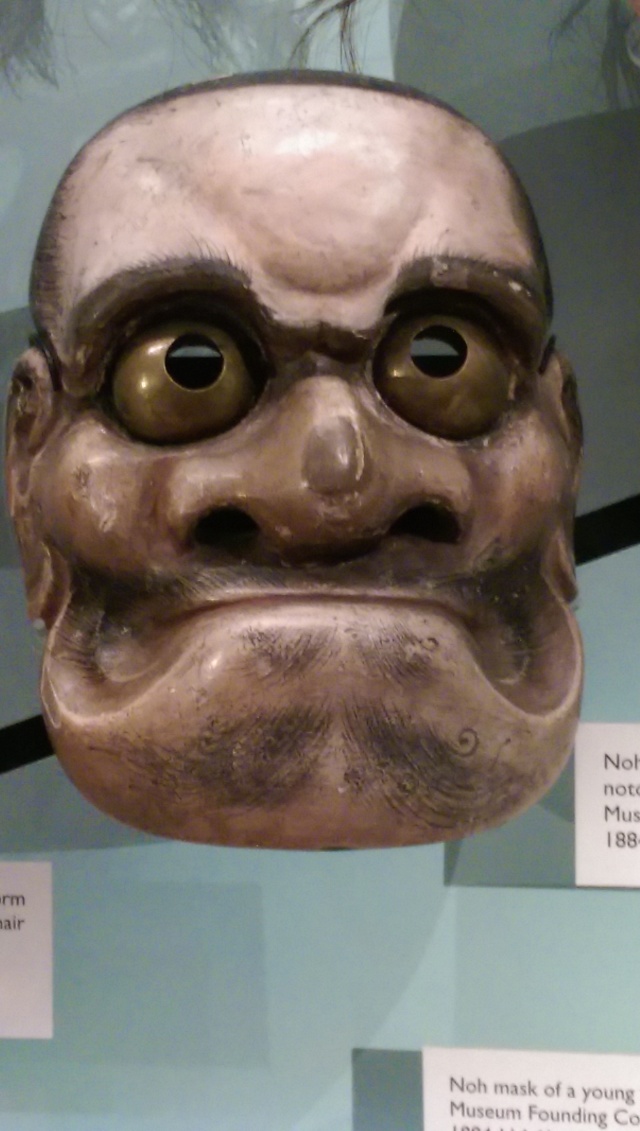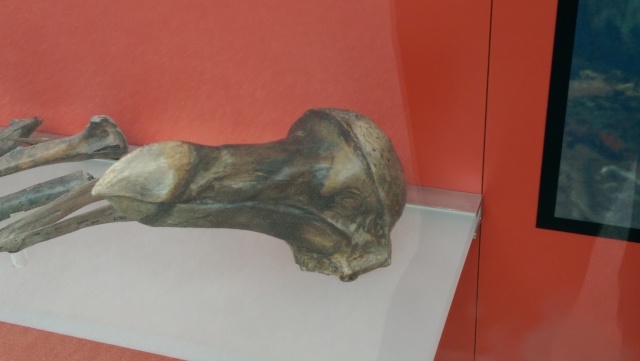I moaned to anyone who would listen about my disappointment with the Natural History Museum last year.
I wanted to revisit the beetles.. the display cases full of incredible beetles from all over the world – teeny beetles, mediocre beetles, beetles bigger than your head* from the depths of the jungles of South America.
But there weren’t any on show and they weren’t available to see unless you attended one of their Saturday morning ‘mystery tour with an expert’ type events. The gist of my sentiments were that the famous, much-admired museum had dumbed itself down too much for younger visitors. I wanted the old-style museum with cases of specimens.
When I was a child, Gloucester museum was all faded stuffed animals with slightly wonky eyes and small labels which you squinted to read, featuring the common name and the Latin name and, if you were lucky, a bit more information.
There were drawings of creatures on maps showing distribution or the stuffed bird would be suspended in front of a hand-painted representation of a desert (much yellow) a jungle (greenery-gone-mad) or an arctic scene (off-white with an igloo and a snow-storm brewing).
There was nothing with whizzy graphics, no buttons to press, no TV screens. It was all a bit dull (“Dry as dust” – mum) but I liked that. I liked the ‘old’ smell and the way utter silence was broken by my Clarks’ shoes squeaking against the polished parquet flooring. The dull displays didn’t bore me – they piqued my interest.
So imagine my excitement when I visited Oxford at the weekend with a pal and found, hallelujah, that the Oxford University Natural History Museum and the adjoining Pitt Rivers Museum are the perfect combination of old style and new style museums.
The Natural History Museum is excellent – housed in a specially-designed and much-decorated iron-framed building with a glass roof that allows loads of natural light on the specimen cases, the displays and the impressive collection of dinosaur skeletons.
Probably the single most wonderful collection in the museum – after the massive stuffed albatross, the huge tyrannosaurus skull, the excellent giant isopod and rhinocerous beetle – was the contents of Paviland Cave, Gower, Wales.
I’ve been a bit fascinated about the Red Lady of Paviland – a collection of bones and arrow-heads which were discovered in a mysterious cave in the cliff not far from Port Eynon. On my last trip to the Gower, I spoke to a chap who told me it was possible to walk to the Paviland Cave at low tide and scramble up into the actual cave itself!
There in the museum, beautifully displayed in a case were the entire contents of the cave – a few slender red bones – from a youth who died 34,000 years ago, which made him Paleolithic. His are the second-oldest human remains ever found in Britain. Only a jawbone found in Kent is older. The red had been analysed and is thought to have come from iron-oxide-stained funeral garments. He ended up in the museum because the person who discovered him in 1823 was one William Buckland, first professor of geology at Oxford University.
The adjoining Pitt River building was built a couple of decades later but it’s the yang to the airy natural history museum’s yin – a thrillingly dim hall with galleries around a central floor containing cases and cases of fascinating anthropological material from around the world including the Amazonian jungle.
I was staring at the Japanese mask collection when I saw a ‘yummy mummy’ in Ugg boots emerging from the lift with a toddler in a pushchair and a four-year-old telling them “Now let’s go find mummy’s favourites – the SHRUNKEN HEADS!”
The dimly-lit glass case, contained several heads. They were truly the stuff of nightmares – shrunken dark-leather faces more like small baboons than the people they once were with long reddish-brown hair hanging lank.
Head-shrinking was going on until the 1960’s, according to the information. The tribal people of the upper Amazon believed that by taking and shrinking enemy heads, they were capturing their souls and absorbing their power into their own people. All this was going on while Buddy Holly was rocking the world with Peggy Sue.
After the ceremonies to claim the soul had been carried out, the tribespeople lost interest in the heads, so they had no qualms about selling them to collectors.
The museum was founded after General Pitt Rivers donated his collection of more than 18,000 objects to Oxford University. Anthropologists, doctors and explorers have continued to donate photographs, audio and objects so the collection now comprises more than half a million pieces.
While much of the collection is devoted to articles crafted with incredible skill from very basic materials, a lot of it is linked with the man’s inhumanity to man. There is a vast display of weaponry through the centuries and there are other weapons for hand to hand fighting which make the blood run cold to look at them and consider the damage they might do.
But the collection provides a wholly mind-blowing experience – in the old-fashioned way. Everything is labelled and you can immediately tell if it is part of the original collection or has been donated. Sometimes, as with the skulls, the details have been penned very neatly on to the skull itself.
Each display case is packed with items from the tiniest piece of carved ivory to the totem pole standing at the end of the hall.
There’s something to interest everyone, from the gorgeous – tribal garments beautifully made with real feathers – to the gruesome.
I won’t drivel on about the amazing, intricate craftsmanship which Inuit caribou suits demonstrate or the extraordinary waterproofs they used to make by flattening strips of seal intestines and painstakingly sewing them together to make capes.
I won’t even bother to mention the looms, made from rough bits of old wood and string which were used in parts of Africa to create the most stunning pieces of richly patterned cloth.
You should really go and see for yourself but I’d definitely avoid the museum-organised “torchlight tours.”
The sight of the shrunken heads in the dim light of day was enough without encountering them, displayed in all their hideousness, by the dim beam of an old Maglite.
*Obviously your head would be quite small…
The Pitt Rivers Museum
Japanese Noh mask representing Kumasaka – fearsome bandit of ancient legend
 Remains from Paviland Cave – the Oxford Museum of Natural History
Remains from Paviland Cave – the Oxford Museum of Natural History
All that’s left of a dodo…
All that’s left of some humans…





So it was OK then? 🙂
So-so.. 🙂
Great blog, very evocative. I too used to love Gloucester Museum when I was a child (whatever happened to the bees?), or even better, the higgledy-piggledy rooms of the folk museum – many a happy hour spent there.
I have to say I like the Natural History Museum too though. I know what you mean about dumbing-down, but maybe that suits me….
Yes! The bees!! Mind you, I do love the Roman exhibits now – much much better. The salmon putcher in the Folk Museum is probably my favourite. The bikes look too much like the terrible old thing my dad got for me when I was a nipper!
Oh I still love the Nat History Museum but last visit was disappointing because I wanted to get back to the massive tropical beetles.. and they wouldn’t let me see them. 😦
Cheltenham museum was the same for me – they spent a fortune recently “improving” it but I only want to feel the fusty memories return. The Dowdeswell Pike remains though. In fact I love local museums because the connect us with the naff ness of our lives!
I haven’t seen the Dowdeswell Pike – it’s stuffed, I take it? How big is it?
I found The Wilson (honestly!) a bit confusing and have since found out that I missed most of it. This may have been because after gawping at the Rodin, I got sidetracked by the collection of Edward Wilson’s Antarctic memorabilia and his watercolour paintings. 🙂
weblog. Loads of gratitude sharing. cedaaeebgedf